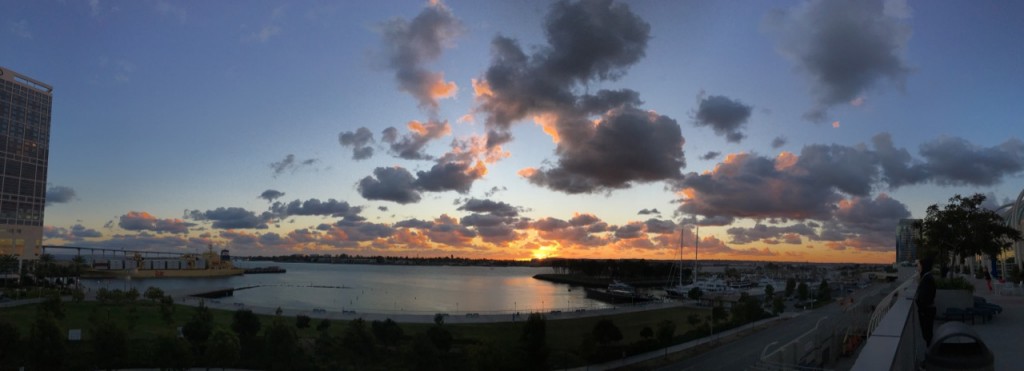One of the best aspects of flying is being apart from the world. Not only terra firma, but the troubles of life, questions of the future, and concerns of the present. Flight requires attention to instruments while in operation, but long cross country flights leave the pilot with time to sit and watch the world unfold beneath as time passes.
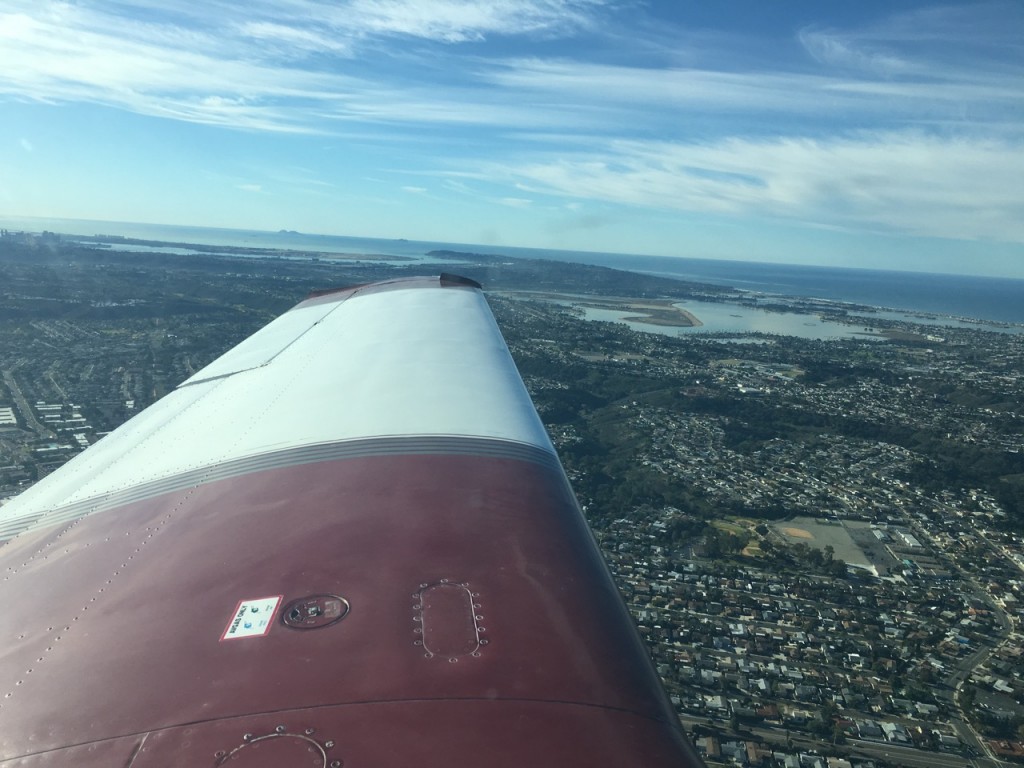
Night flight brings an even more isolated perspective, where after a few minutes alone, you watch the gauges, view the small points of light from far off cities, and feel suspended in the air, utterly alone in the earth.
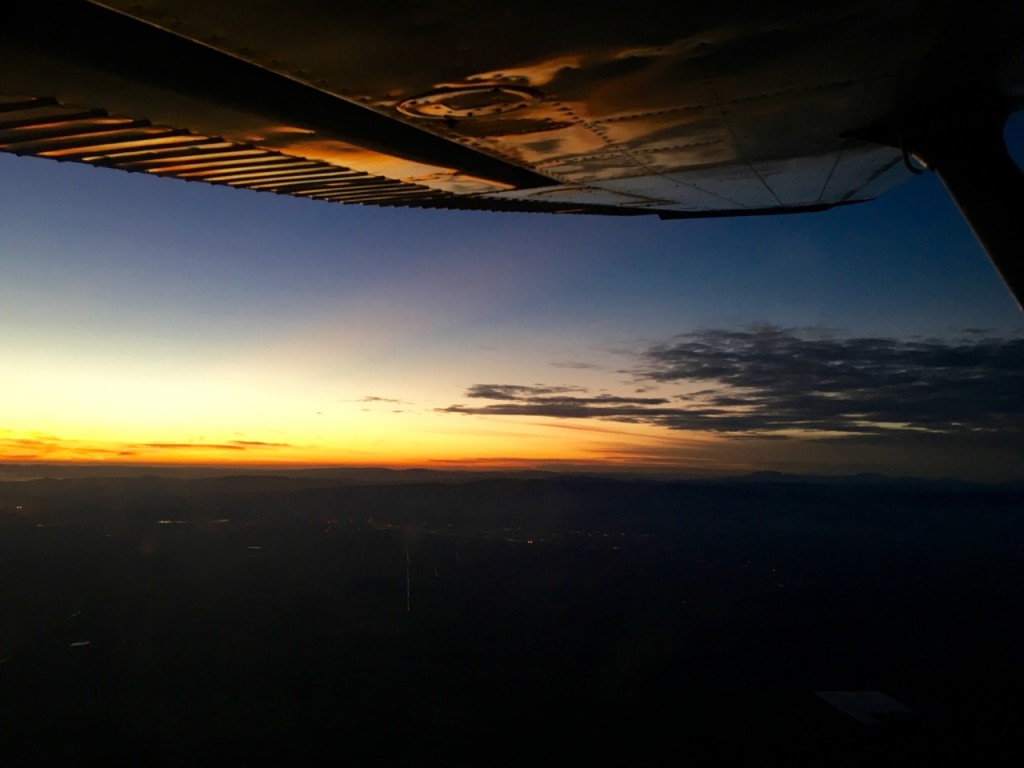
So last night, flying home with the sun setting behind me, I had a chance to consider the past week of ASCB, and what it meant to me.
Trade shows are hard. They are hard for the attendees and the exhibitioners. Attendees sit through lengthy talks, then browse the show floor and get bombarded by marketing, then have dinners with colleagues into the night. Exhibitors aren’t that different. Business meetings in the early morning, standing at the show floor booth all day, and then meetings and dinners with colleagues and contacts into the night. By the last day, everyone is happy to rest on the trip home!
Yet somehow in this internet era, there’s nothing like meeting face to face, to share life, to discuss new projects, and meet new people. This year was my 14th year of attending trade shows as a member of the microscopy community. In that time things have changed in many ways, and are exactly the same in others. I hunted through the Blanco archives and found a few shots from my very first trade show. What an impression it made on me! This was from Neuroscience 2001, with my good friend Will Casavan. I was there working for Technical Instrument Company at the time, and Will was with Media Cybernetics. 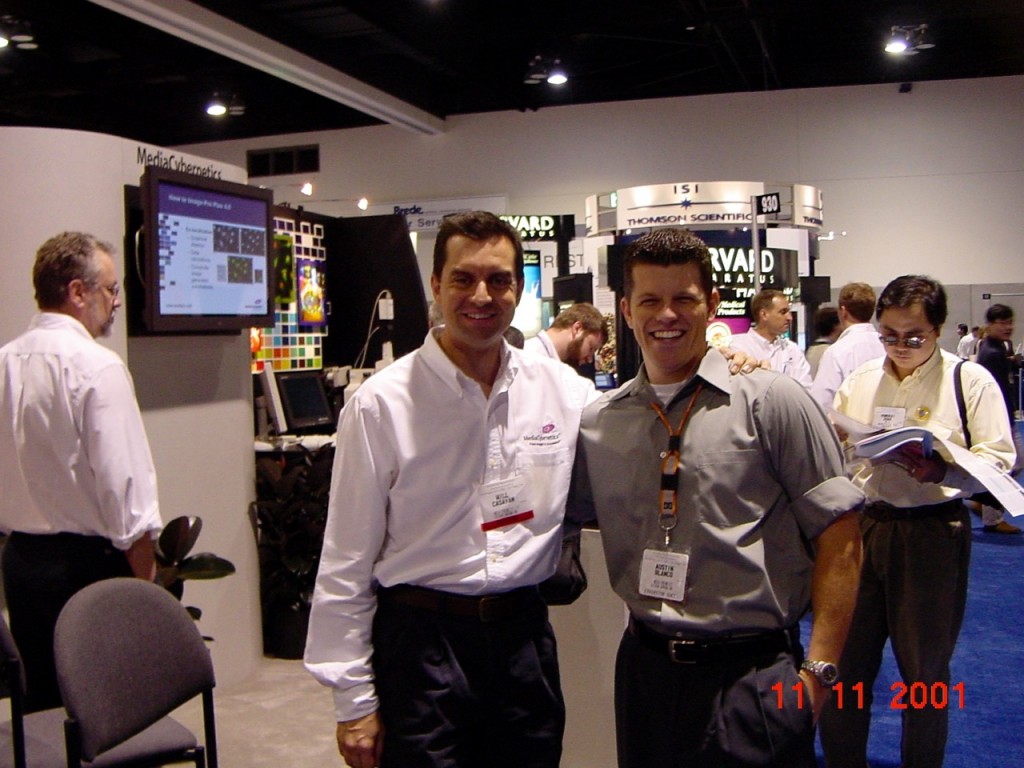
Little did I know that it would be 14 years later, that Will would link me up with Echo labs, and a new and exciting chapter in my life would begin.
I bring up the past for two reasons. First, because I enjoy looking back to see how far this industry has come. 14 years ago the hottest product on the market was the Nikon TE-2000, and it sported 2, yes 2!, cameras. One for fluorescence, and one for brightfield. The inverted microscope with cameras, computer, capture cards (yes, the cameras required a card, check out that data cable!), monitor, supporting electronic boxes and cables, took up a large bench worth of space, and ran about $65,000.
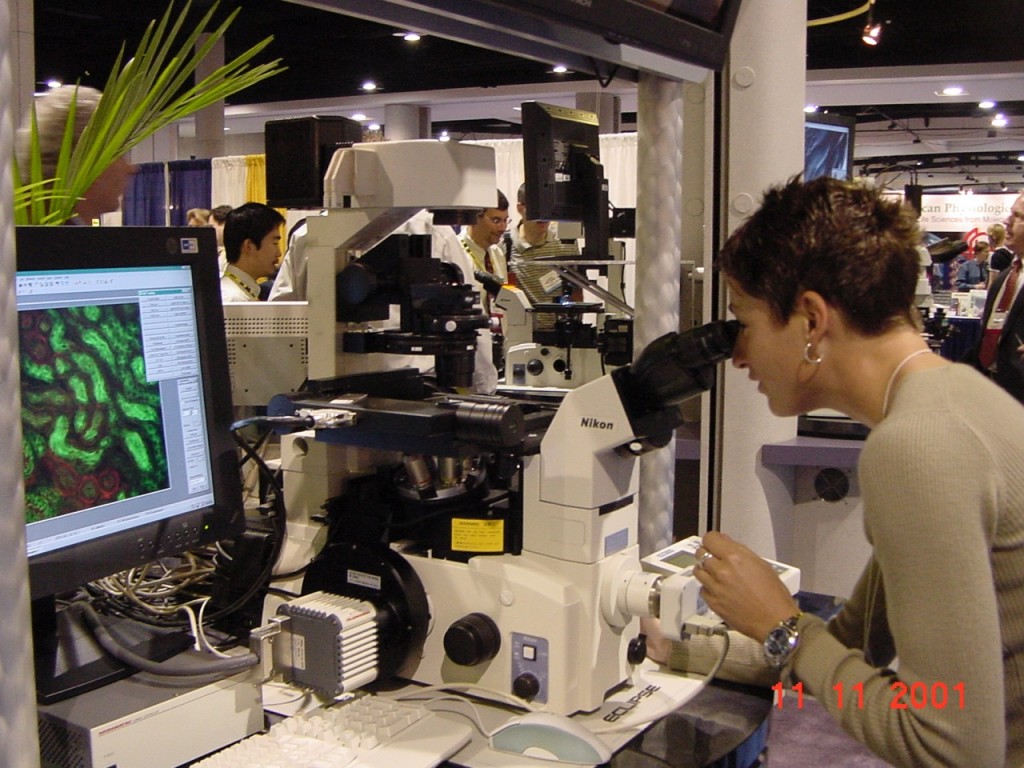
Some might argue that this industry hasn’t evolved quickly enough, but consider the following. Almost every function performed on the microscope above can also be performed using the ECHO Revolve. Of course, while at the booth I was able to airdrop images like this one straight to my phone, allowing me to easily post them on the blog!
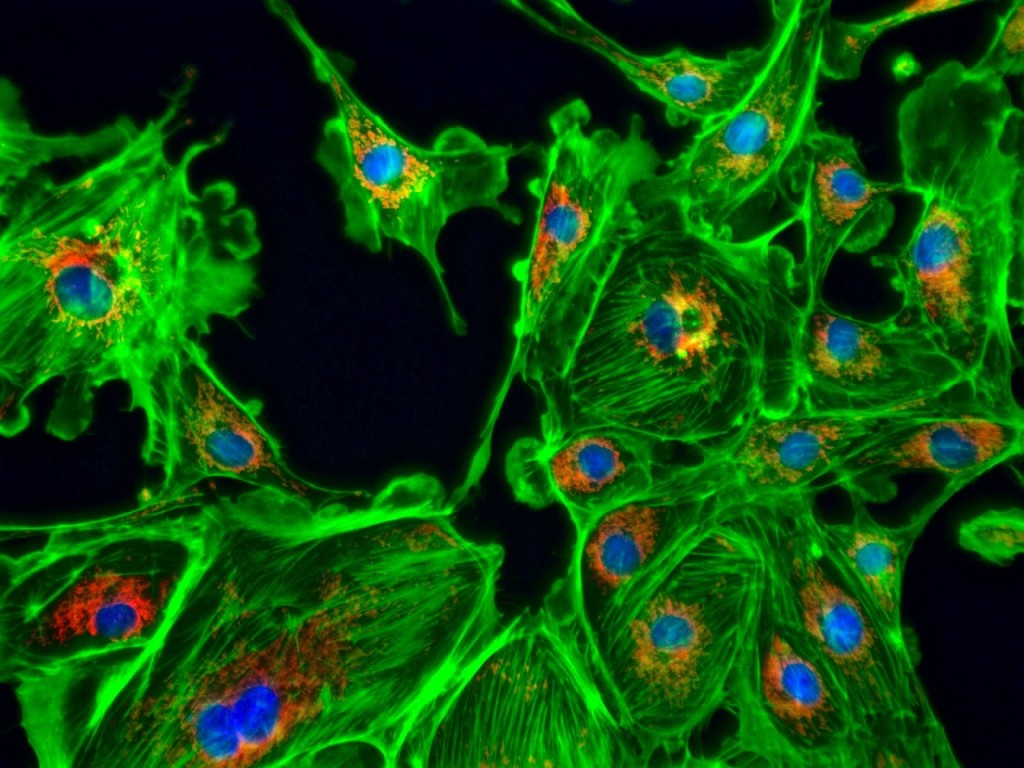
To me, this is a major step forward in research technology. I think the attendees who visited the ECHO booth would agree, as while working the booth I don’t think there was a single minute without at least 1 person looking at the scopes. In 2 of the 3 days I worked the booth, we couldn’t even break for lunch!
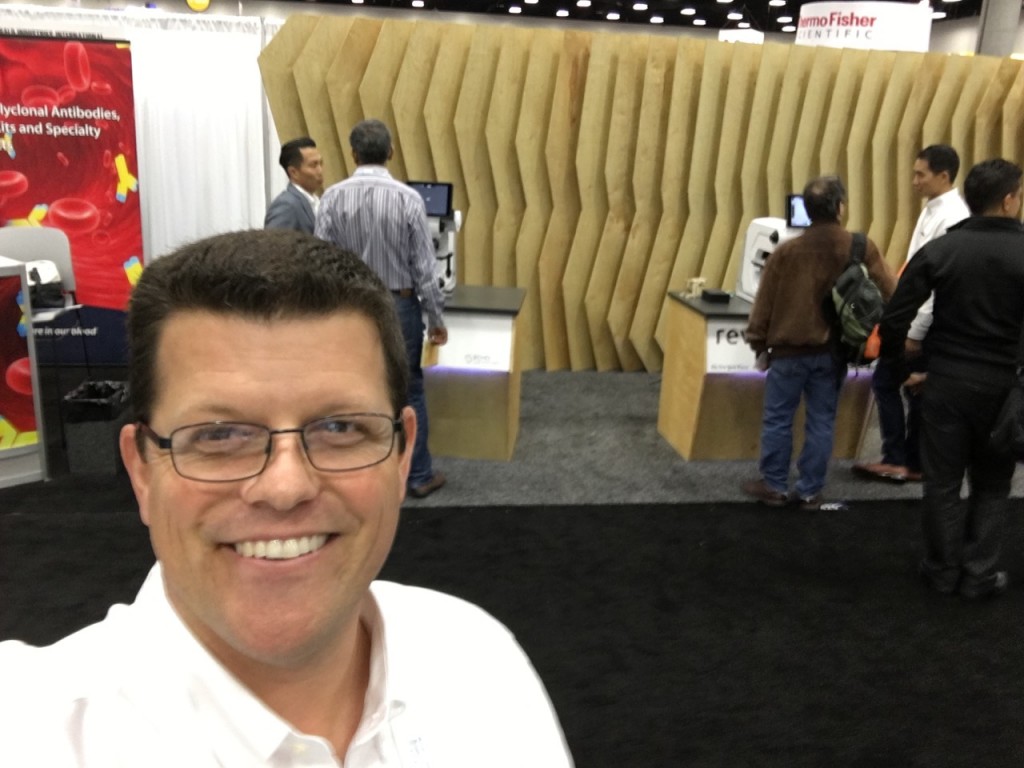
While writing this, Eugene Cho, CEO of Echo labs, sent me a great timelapse of the show. I think this is an excellent video, as it shows the additional hard work required for exhibitors, to set up and tear down these displays. ECHO hand made the booth for the show, and the personal touch really made the booth stand out from the crowd in my opinion!
Of course, there are many other advances taking place in the industry! I got to speak with Silvia Foppiano of Oko Lab, and was amazed how far incubation technology has come! In 2001, the best incubators I remember were homemade ones. Today, you can buy a stage top incubator, with magnetized connectors, micro-scale thermistor temp probes, humidity and co2 control, for prices around 1/3 of units in the past. As a machining junkie, I was very impressed with the finish of these units. If you are looking for an incubation solution you should definitely check them out.
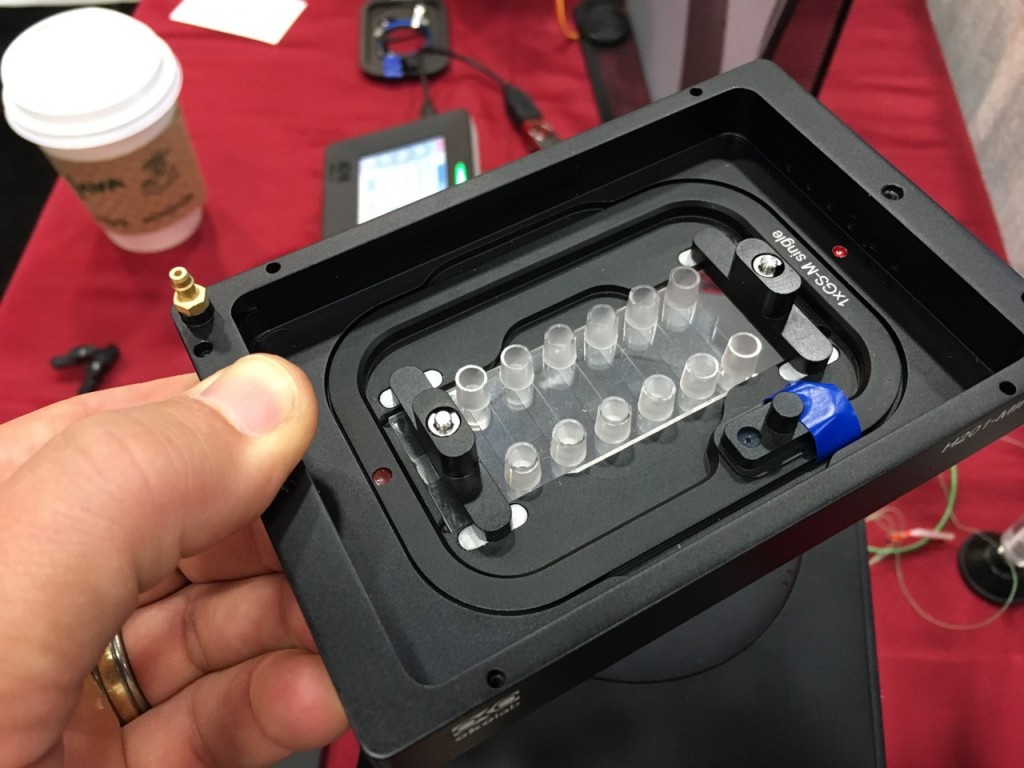
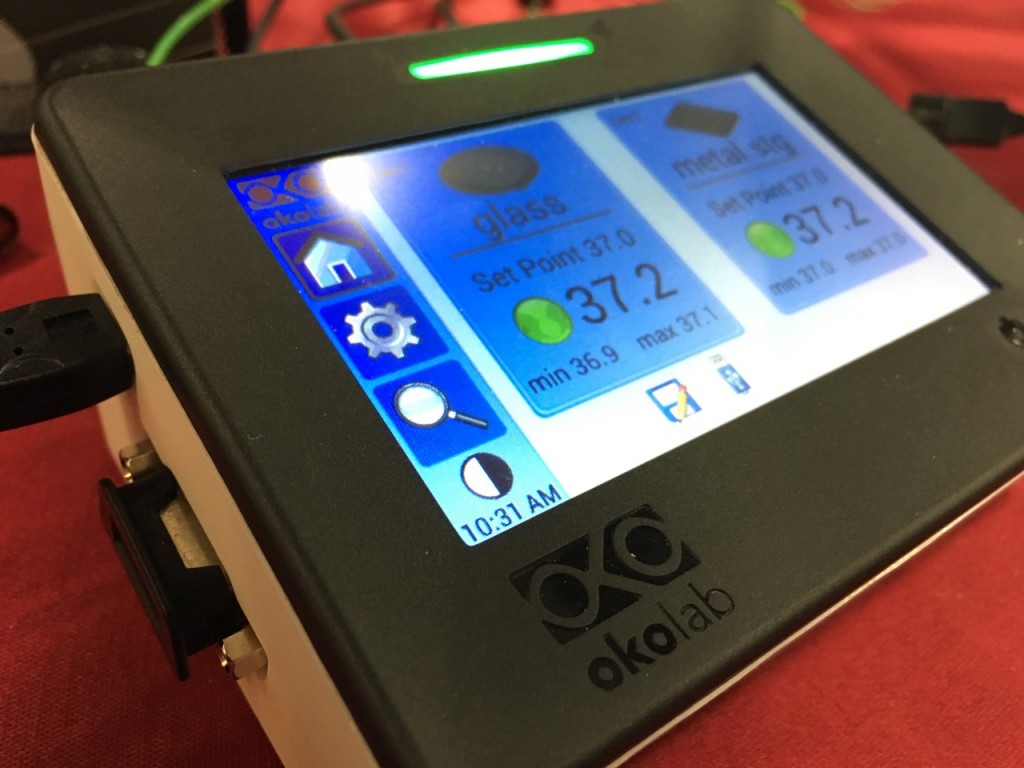
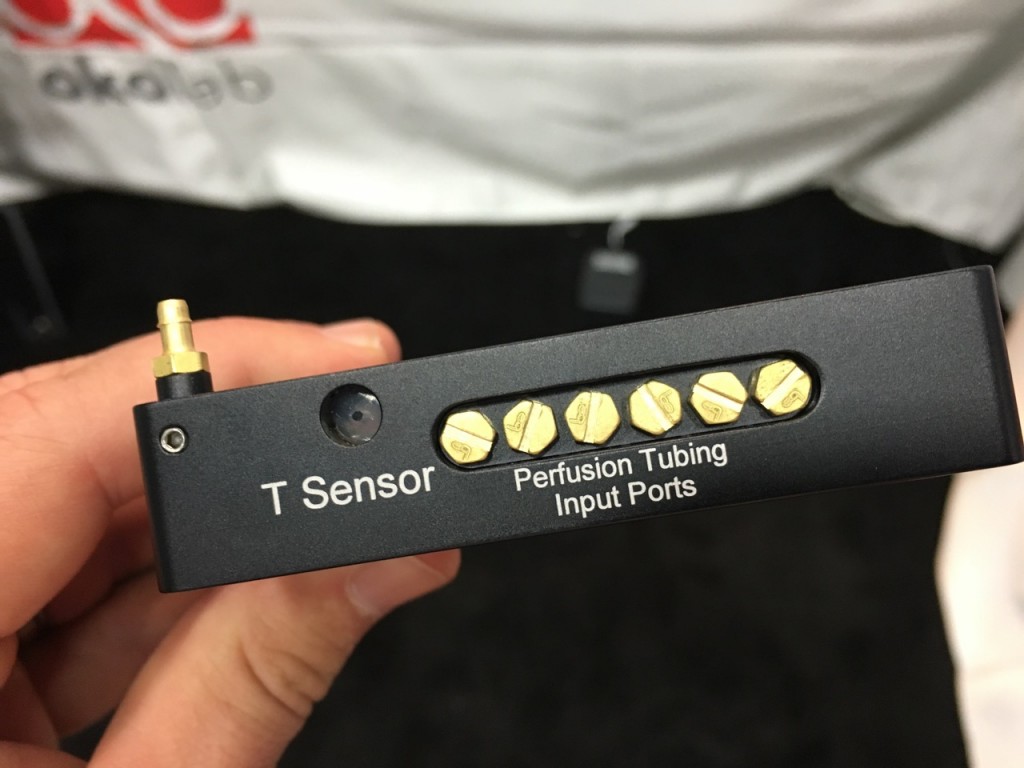
Zeiss has an awesome Oculus Rift-equipped demonstration of interactive sample observation. I couldn’t believe it when I walked by, there was the rift, and no-one was sitting in the demo chair! Boom 🙂 I had to jump on that chance. As a tech nerd and gaming junkie, I’ve been relishing the chance to test these, and it was a super cool experience! At first it’s disjointed to turn and see the image field move with the accelerometer inputs on the rift. Navigation was performed using an XBOX 360 controller.
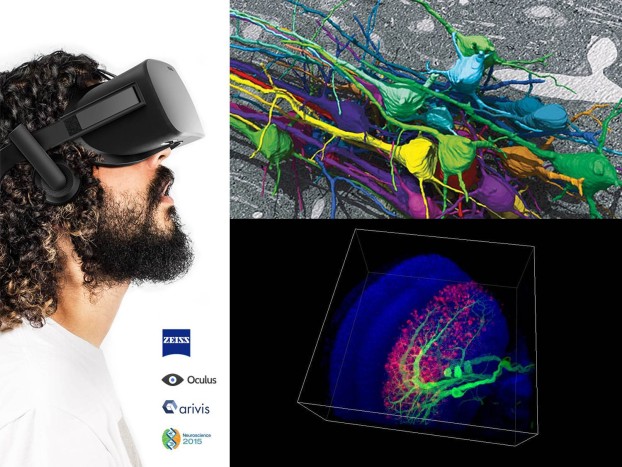
In only a few minutes I found my senses immersed in the environment, and was soon able to fly around with ease without even thinking about the control inputs required to do so. It really was like being in another environment. Excellent demonstration by Zeiss, and I’m happy to see that these types of technology are being adapted for use in biology.
Sutter Instrument Company had the new IPA Integrated Patch Amplifier system on display at the show. This system is a huge leap forward for cell physiologists. With a single system, you get a matched probe, amplifier, and digital capture device, all optimized for low noise and maximum sensitivity. Definitely a major step for whole cell analysis!
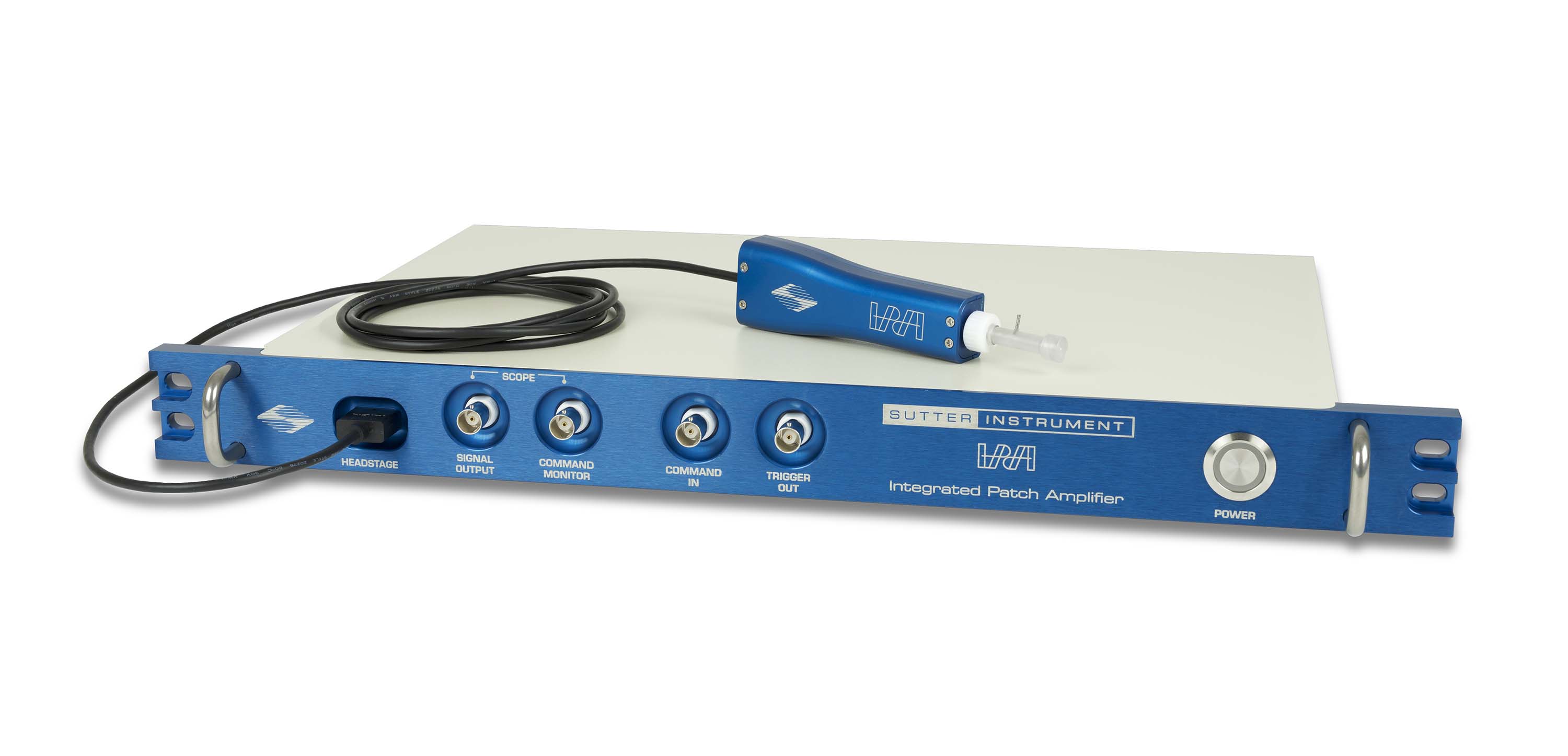
Open-Imaging had a booth as well, demonstrating the new Micro-Manager 2.0 open source microscopy platform. 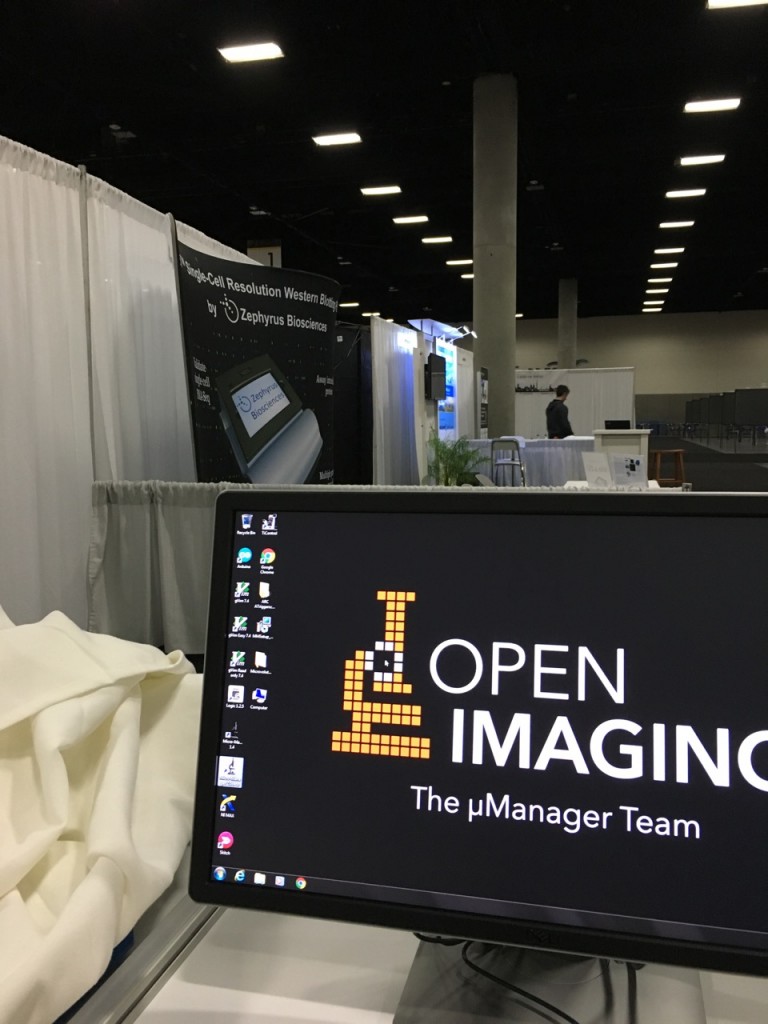
I’ve seen a lot of new (read unstable) software at shows like this, and was surprised at how smoothly things worked. It’s obvious that Chris and Mark have put lots of time into this version, to make sure there’s minimal chaos factor when end users upgrade. I was also able to spend some time talking with Mark, as we flew to the show together this year! I’m excited for the future of Open Imaging, and am looking forward to working with the new release!
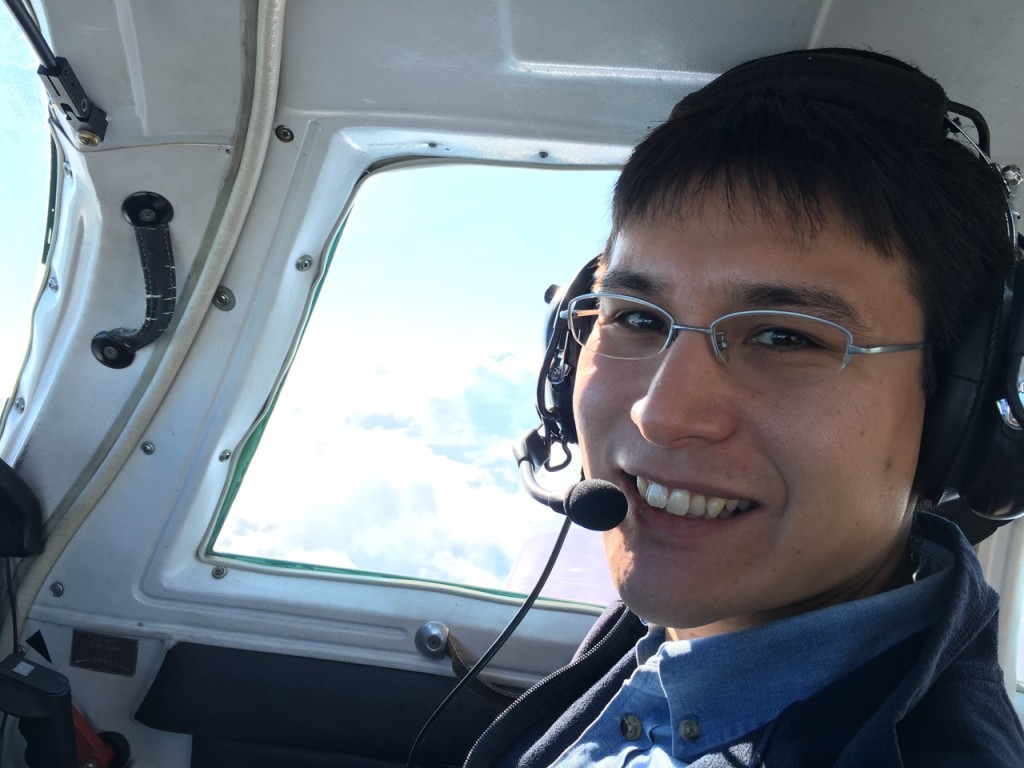
I want to give a special thanks to Sutter and Open Imaging, who both allowed me to present my Triggerscope at the show. I hope you got a chance to see it!
My second observation is more a felt sense than a metric. Maybe it was the new product advancements, or my age, or who I spent tim with, but I felt a shift in generational control of the industry. During my early years in microscopy, there were a group of highly intelligent, capable and dedicated people who, in one form or another, directed the outcome of products and services in this industry. But now, a decade and a half has gone by, and I’ve realized that a new group of people are influencing that direction. While I may never get to place my personal mark on the industry, I know that I get to work near those who do. To the people who led us here, I’d say thanks for working so hard to bring this industry such incredible capability. To those who now have the burden of keeping things new, I say bear this responsibly, not lightly. Our industry should be the hallmark of the highest ethical standards, have the strictest dedication to accuracy, and consistency. Our marketing should keep people captivated while only promising what we can deliver. We should price products fairly, and support them well. I hope we are up to the challenge, because it’s in our shoulders now.
Yet…..when I did get a chance to walk the show floor this year, I took heart. I can see that the future is bright 🙂
Austin
